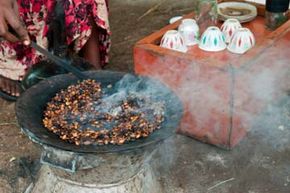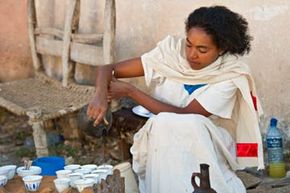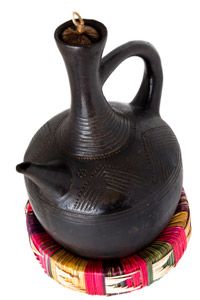The Ethiopian coffee ceremony is much more than sipping a good cup of joe. It's an important cultural ritual that's been passed from generation to generation in the country believed to be the birthplace of coffee. And we can thank a few lucky goats for the discovery.
Ethiopian folklore contends that coffee beans (which are actually the seeds of cherrylike fruits) were discovered around 800 A.D. by a goatherder's charges as they grazed on the red fruit of a coffee plant. When the goats began frolicking, the herder rushed a handful of the mysterious fruit to nearby monks, who promptly destroyed the seeds by tossing them into a fire -- something they were wont to do with potentially sinful items.
Advertisement
However, the roasted seeds exhibited two miraculously redeeming qualities: a delectable aroma and, when crushed and steeped in hot water, a distinctive drink with an invigorating kick. The brew buzzed the monks' daily devotions, allowing them to continue their prayer long into the night [source: National Coffee Association]. And as coffee's popularity spread throughout Ethiopia and eventually the world, it inspired a devotion all its own.
Today, an estimated 12 million Ethiopians grow and harvest coffee beans in what has become the nation's major cash crop [source: Doyle]. During the 2010/2011 fiscal year, coffee accounted for the lion's share of the country's exports, earning a record $841.6 million [source: Masho]. Ethiopia's varying terrain fosters different types of coffee plants, each producing seeds with a distinctively different flavor. For example, the coffee beans the monks used were most likely a robust Arabica strain that grew wild in the forest underbrush.
Just as they did over a thousand of years ago, Ethiopians still consider the coffee ceremony a crucial tenet of friendship and respect -- so important, in fact, that they'll perform the hours-long ceremony for any visitor, no matter the time of day. It all starts with an elaborate ritual to prepare the coffee seeds.
Advertisement





